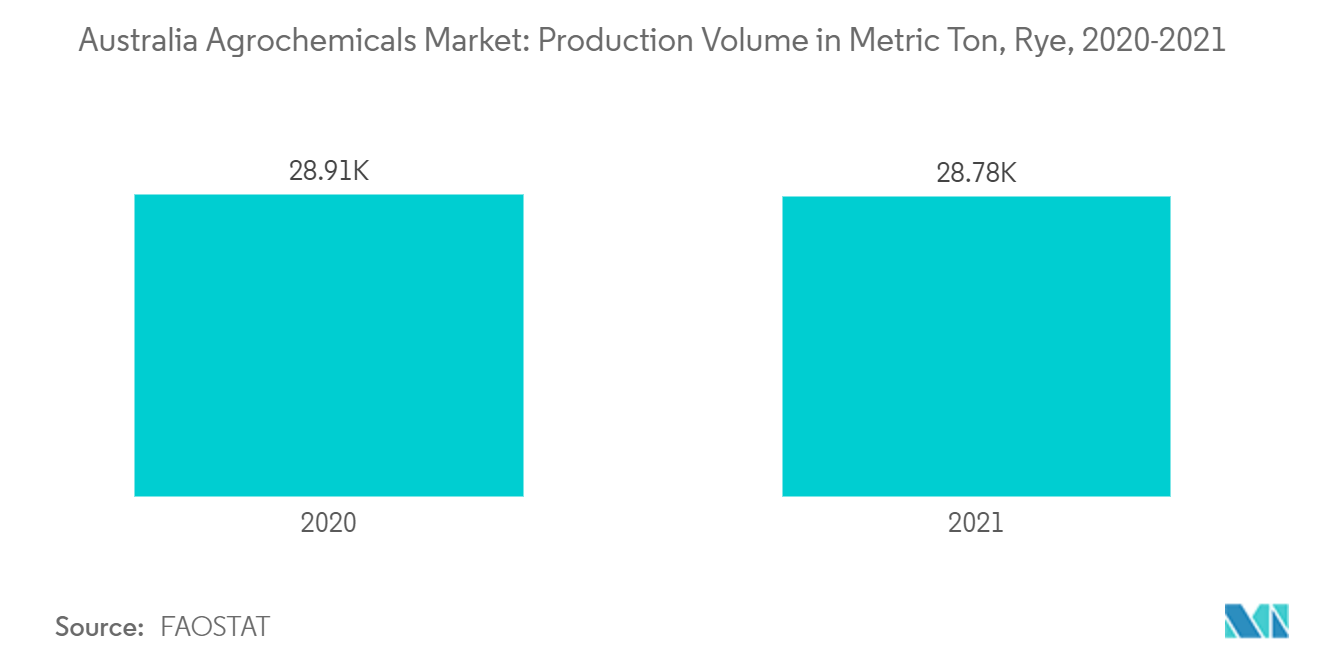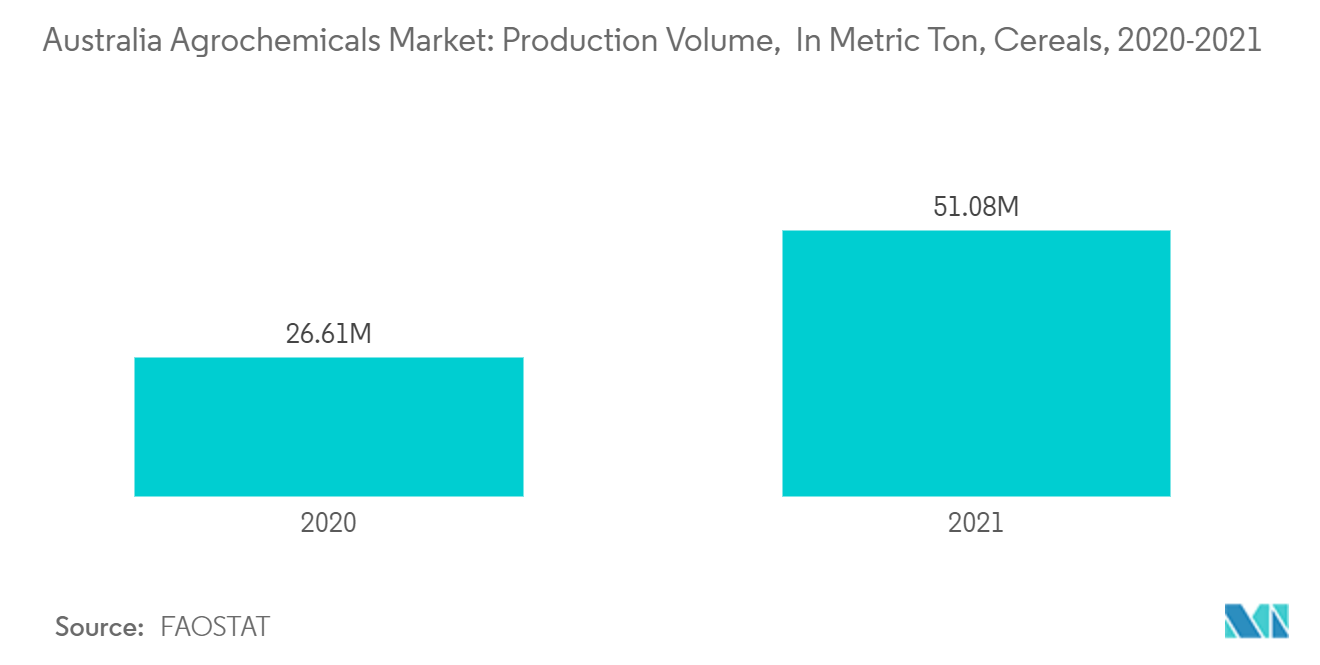Market Trends of Australia Agrochemicals Industry
Crops Pests and Diseases are Affecting the Crop Production
- Pests, diseases, and weeds are a constant risk for primary producers, as they can seriously impact agricultural production. The spread of pests and diseases is affecting the production of crops. Various measures, including insecticides and chemical treatments, have been heavily used to prevent and control pests.
- Insects such as grasshoppers and locusts are responsible for widespread crop damage. The fall armyworm is a major agricultural pest that feeds on economically important crops such as maize, cotton, rice, sorghum, sugarcane, wheat, and other vegetable and fruit crops. The fall armyworm was initially found on the Torres Strait islands of Saibai and Erub. Ever since, it has been in Queensland, Northern Territory, and Northern Western Australia. Later, it was found in Northern New South Wales between Moree and Boggabilla near the Queensland border.
- The Australian government is investing heavily in research and development to increase the efficiency of crop production and pest management, which is expected to drive market growth. For instance, the Australian government provided Plant Health Australia with USD 600,000 to address critical gaps in national research and development identified in a national workshop.
- Projects investigate the fall armyworm genetics, pesticide resistance, commercial and native hosts, and seasonal effects on population dynamics. Therefore, the increasing spread of pests and diseases, technological advances and innovation, expenses in R&D, and the search for environment-friendly products to enhance production and productivity are expected to fuel the market's growth.

Pesticide Use is more in Grains and Cereals Segment
- Major cereals, including wheat, barley, oats, canary, and triticale, are grown in Australia. Insects, such as cutworms, armyworms, mites, Helicoverpa, and aphids, are commonly known pest species that cause yield loss for these crops. Therefore, insecticides are the country's most used agrochemicals in cereals and grains.
- Aphids are the primary insect pest affecting barley in the northern growing region of Australia. Research shows the significant impact of aphids in the north is through their feeding activity, which reduces barley yields. The year-on-year decline in the production of corn and other cereals due to the damage caused by the insect pest attack is leading to more demand for crop-protection chemicals and fertilizers.
- Growers in the country apply a foliar insecticide in late winter or spring to avoid direct damage to tillers and heads. The seed dressing fungicide Systiva (fluxapyroxad) is registered by the Australian Pesticides and Veterinary Medicines Authority (APVMA). It is the most popular fungicide for controlling spot-type and net-type net blotch, which are significant diseases in barley. Therefore, to reduce the infestation of diseases and pests, many farmers in Australia rely on agrochemicals to protect their crops from pests, weeds, and conditions. Production in the country for cereals increased in 2021, which also depicted the increased pesticide use.

